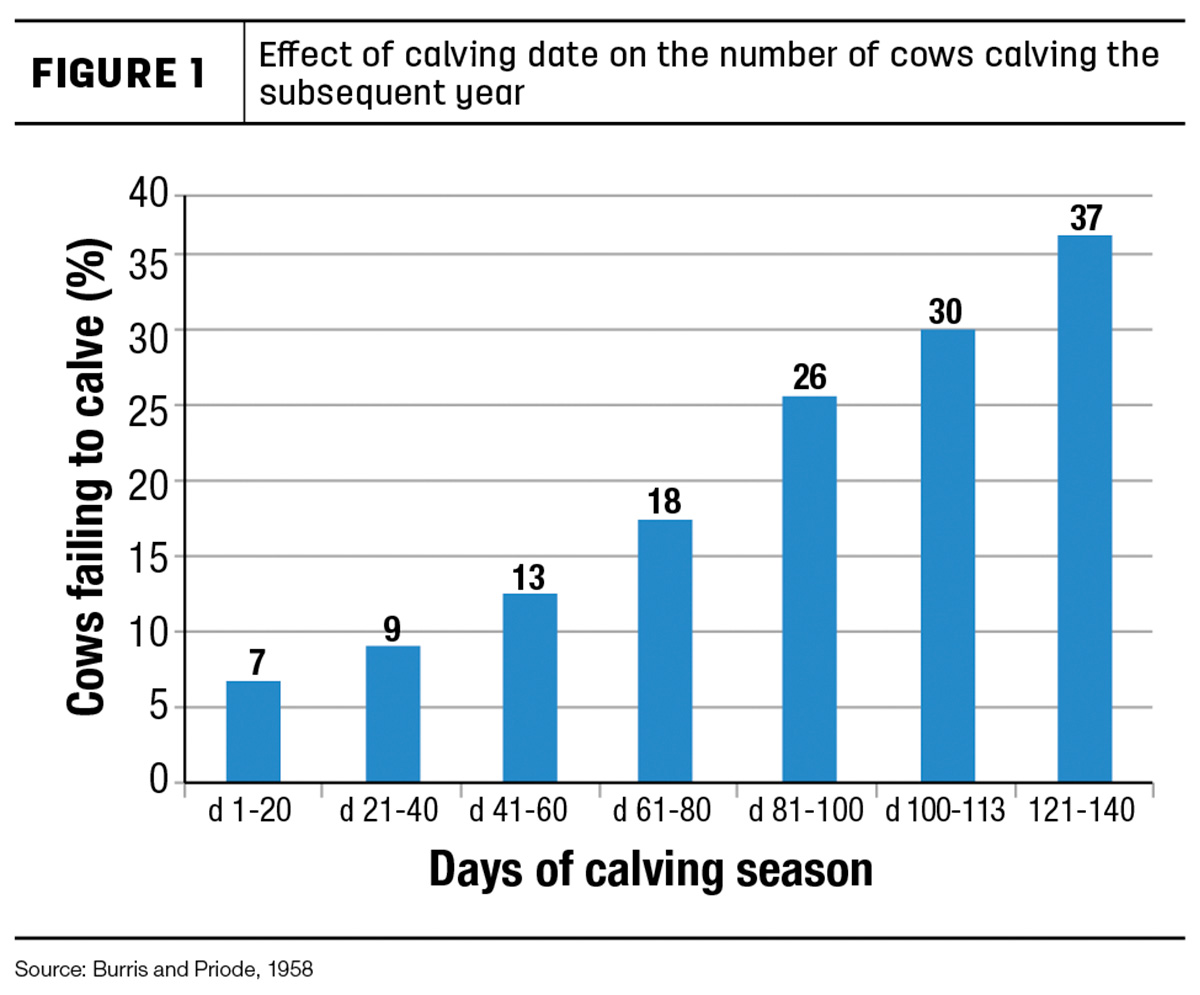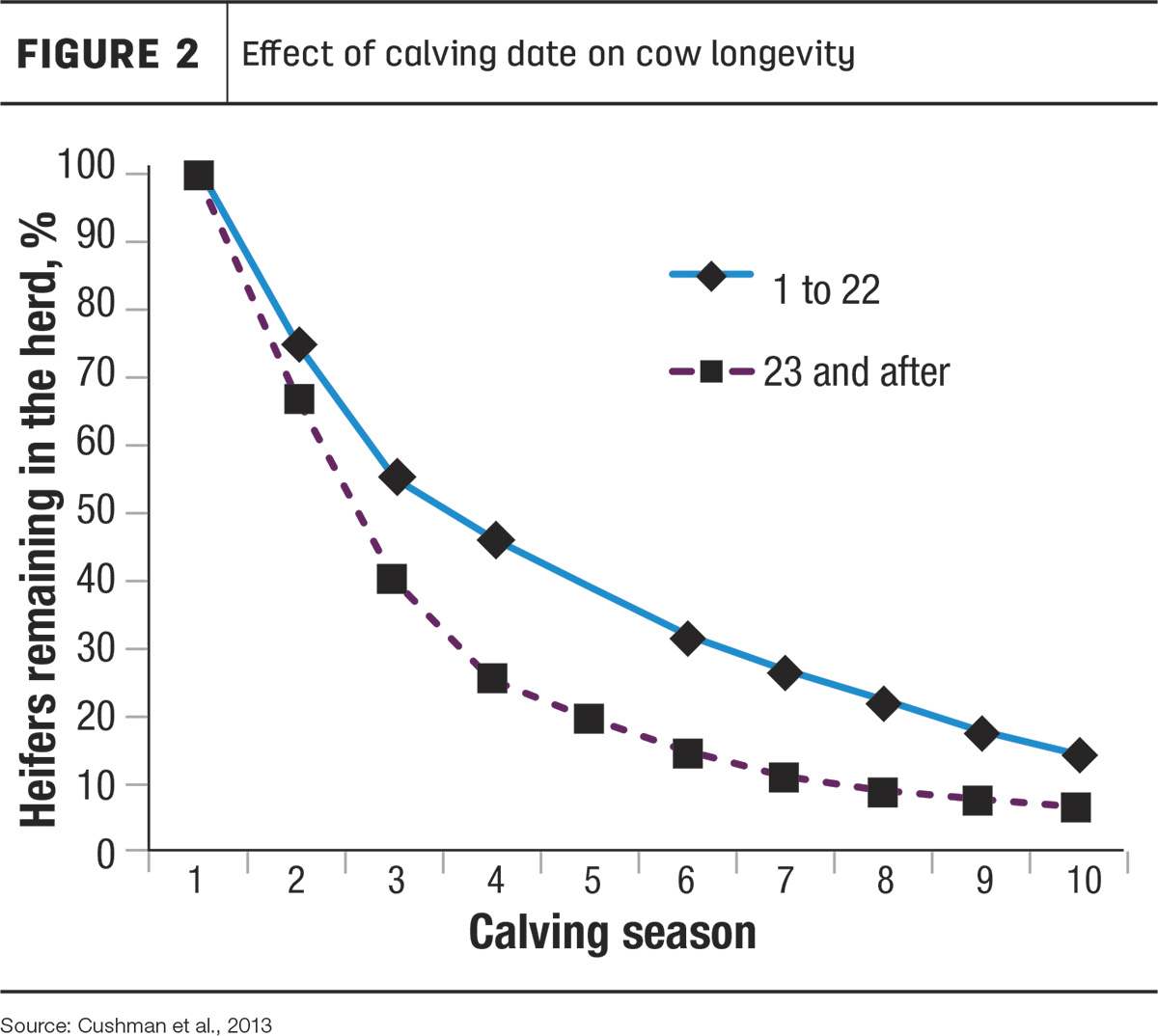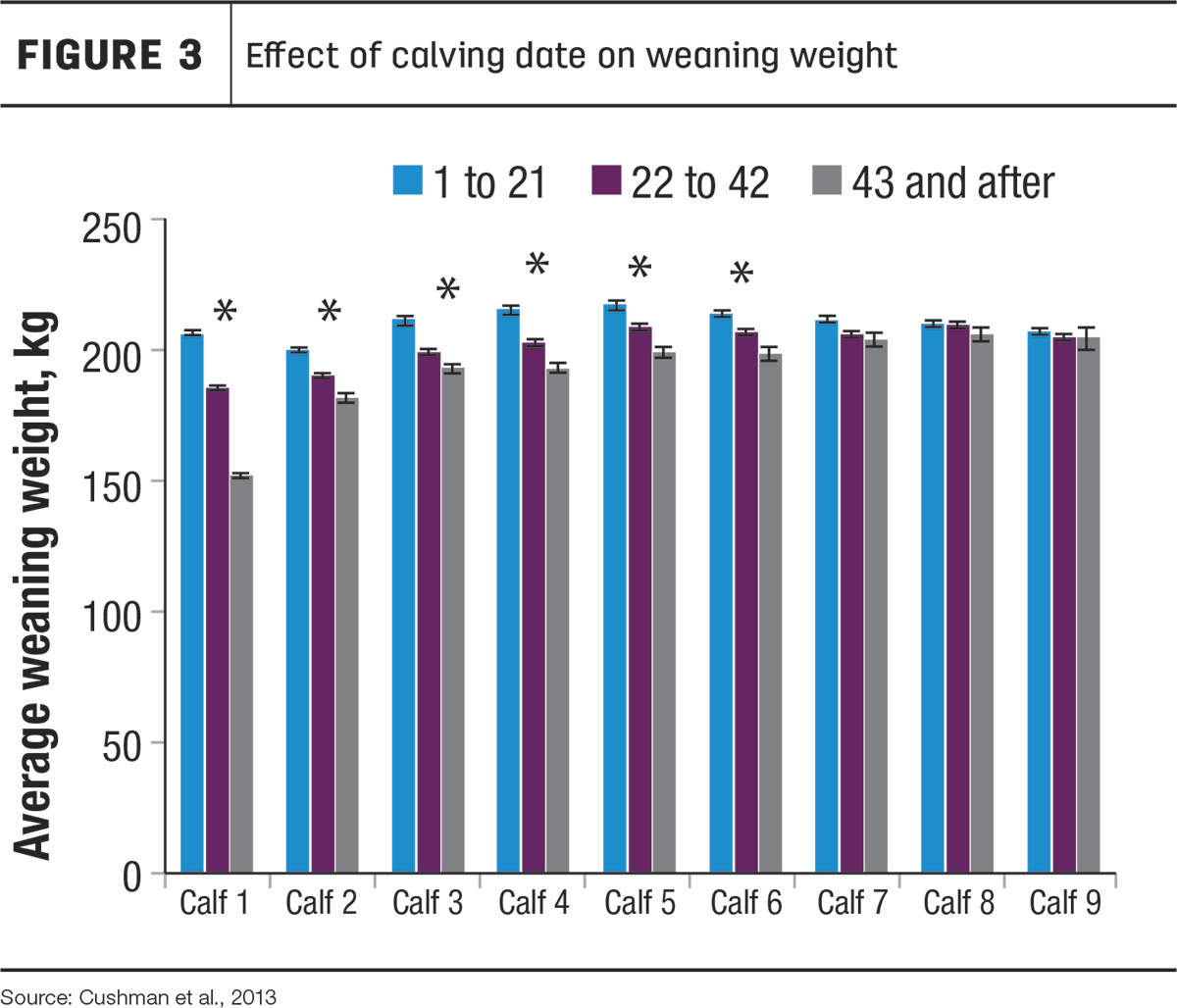Rising operating costs, global competition and societal concerns about energy and the environment have created many economic challenges for the U.S. beef industry. For beef producers to meet increasing demand for high-quality and consistent beef products, producers should strive for enhanced focus on increasing the efficiency of beef production. One way to improve reproductive efficiencies in well-managed cow herds is with estrus synchronization programs used in conjunction with artificial insemination (A.I.) and/or bull breeding programs. These programs can be as simple as one injection or a series of injections to help get more cows pregnant early in the breeding season, resulting in more calves being born early in the subsequent calving season.

First, let’s look at one of the benefits in the cow herd of having more cows calving early in the calving season. When a cow calves early in the calving season, she has more time to recover from calving and begin to start cycling (showing estrus) prior to A.I. or bull exposure for breeding. In comparison, when a cow calves at the end of the calving season, she has less opportunity to return to normal cycling status, and the timing reduces her ability to breed-back during a normal breeding season. This timing also increases the possibility of those late-calving cows being non-pregnant after the breeding season and being culled from the herd as non-productive cows. This can be seen in the graph below, which shows the effect of when cows calve in the calving season and their ability to stay in the herd as potential income-producing animals. In this data set, we can see the increase in culling of non-pregnant cows when they calve later in the calving season.
Next, we evaluate some of the benefits of estrus synchronization with A.I. and/or bull breeding in heifers and the effect it can have on their productive life in the herd. Most estrus synchronization programs recommended for heifers to use in combination with A.I. include a progestin (CIDR or MGA) in the synchronization protocol. Progestins, in combination with other synchronization products, help to “jump-start” estrus cycling in heifers that may not have quite reached puberty.

Increasing the number of heifers that are cycling prior to A.I. or bull breeding increases the chances of getting them pregnant in a shorter time frame. Most of the current recommended synchronization protocols for heifers will result in many of them in heat over a short period, allowing producers to A.I. a large portion in a few days, or to potentially A.I. all heifers on one day. Getting more heifers pregnant early in the breeding season allows producers to manage those groups more uniformly through gestation and in preparation for calving. Research data below shows that heifers that calve in the first 21 days of the calving season remain in the herd longer and wean a heavier calf in the first six calving seasons in comparison to heifers that calve later in the calving season.
Lastly, a successful estrus synchronization and A.I. program can allow producers to calve over 50% to 60% of the herd in the first 15 days of the calving season. This allows producers to manage those cows and calves as a more uniform group throughout the production life cycle of those animals. Heifer calves resulting from the estrus synchronization and A.I. program that are born early in the calving season will make great potential replacement females to bring back into the herd. They will be older and heavier at weaning and breeding time, which means more of them will be cycling and ready to breed early in their breeding season, thus increasing the likelihood of more of them becoming pregnant early and continuing the cycle of becoming more productive females to retain in the herd.

Let’s not forget the increased value that can be achieved in bull/steer calves resulting from an estrus synchronization program. More steers born early will result in more pounds to sell at weaning or at a later time. Research data from Nebraska also indicates that early born steer calves resulting from estrus synchronization and A.I. had greater weaning weights, heavier hot carcass weight, higher marbling scores and, ultimately, greater overall carcass value in comparison to later-born calves from that same calving season.
If you or someone you know is looking to improve the reproductive efficiencies of their heifers and cows, reach out to A.I. industry professionals, members of the Beef Reproduction Task Force or other herd managers who are already implementing some of these strategies to see what the best steps are for you to make improvements in your operation.






